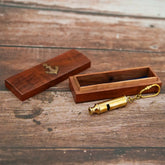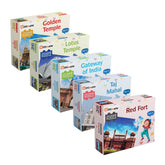Play-Based Learning: The Fastest Way for Kids to Learn

In this article, we’ll explore the top 10 benefits of play-based learning for children. From fostering social skills and emotional intelligence to promoting creativity and imagination, play-based learning has many advantages for young learners. We’ll examine each benefit in detail and provide examples of how play-based learning can help children develop important skills and abilities.
Whether you’re a parent seeking new ways to engage your child in learning or an educator looking to incorporate more play-based activities into your curriculum, this article will offer valuable insights into how you can incorporate play-based learning in kids to approach early childhood education.
What is Play-Based Learning?
Play-based learning is an approach to early childhood education that emphasizes learning through play and exploration. It’s based on the idea that children learn best through active engagement with their environment, rather than passive absorption of information. Play-based learning is a child-centered approach that prioritizes the child’s interests, ideas, and motivations.
In play-based learning, the role of the teacher or caregiver is to facilitate and guide the child’s exploration and play, rather than direct or control it. The teacher provides a rich learning environment and materials that encourage experimentation and discovery, and then steps back to allow the child to explore and learn in their own way.
Play-based learning can take many forms, from free play to guided play to structured activities. It can happen indoors or outdoors and can involve a wide range of materials, such as blocks, puzzles, art supplies, and natural materials. Play-based learning can also incorporate technology, such as educational apps and games.
Incorporating Play-Based Learning into Kids Addicted to Technology
As technology becomes more ever-present, many parents are struggling to find a balance between screen time and traditional playtime. But there’s nothing to be worried about. It is possible to incorporate play-based learning even for kids who seem addicted to technology. Here are some tips:
- Set limits on screen time: While it may be tempting to simply ban screens altogether, this can backfire and lead to resentment and sneaking. Instead, set reasonable limits on screen time and make sure kids understand why these limits are in place.
- Encourage active screen time: Not all screen time is created equal. Encourage your child to engage in active screen time activities such as dance games, exercise videos, or educational apps that teach coding or other skills.
- Create a technology-free zone: Designate a certain area of the house as a technology-free zone where kids can engage in traditional play-based learning activities like building blocks, puzzles, or reading books. Here you can allow them to explore
- Be a role model: Children learn by example, so make sure you are modeling healthy technology habits as well. This means putting your phone away during family time and engaging in activities that don’t involve screens.
- Use technology as a tool: Technology can be a powerful tool for learning, especially when used to supplement traditional play-based activities. For example, use a tablet or computer to research new topics or watch educational videos together.
- Incorporate technology into traditional play: If your child is resistant to traditional play-based activities, try incorporating technology into them. For example, use a tablet to create a stop-motion animation of your child’s block tower or use a smartphone to take photos of a nature scavenger hunt.
- Find a balance: The key to incorporating play-based learning into the lives of kids addicted to technology is finding a balance that works for your family. This may involve some trial and error, but it’s important to keep trying until you find what works best for everyone.
Introducing Play-Based Activities to Kids at home
Introducing play-based learning to kids at home can be a fun and rewarding experience for both parents and children. Here are some different ways to incorporate play-based learning into your child’s routine:
- Play-Based Learning Toys: There are many toys available that encourage play-based learning, such as building blocks, puzzles, and educational games. By providing these toys, parents can create a learning environment that is both fun and engaging. You can check out an entire world of some of the best toys & games that induce learning on MittiMate’s Official Webstore. From Puzzles for all ages, Brain Teaser & DIY Toys, to Model Construction Books, we have an entire variety of toys to choose from, and they’re all designed to induce a sense of learning & mental growth stimulation inside your child. Be sure to check them out!
- Arts and Crafts: Arts and crafts activities are a great way to promote play-based learning. Through painting, drawing, and sculpting, children can express their creativity while developing their fine motor skills and hand-eye coordination.Dramatic Play: Children love to engage in pretend play, which is an excellent opportunity for play-based learning. Dressing up and role-playing allows children to develop their social skills, creativity, and imagination.
- Cooking and Baking: Cooking and baking with children can be a great way to teach math skills, such as measuring and counting. Additionally, children can learn about nutrition and healthy eating habits through hands-on experiences.
- Outdoor Play: Outdoor play provides many opportunities for play-based learning, such as exploring nature, playing sports, and building forts. Outdoor play also promotes physical development and allows children to burn off energy while learning.
- Storytelling and Reading: Storytelling and reading are excellent ways to promote language development and literacy skills. By reading to children and encouraging them to tell their stories, parents can promote imagination and creativity while fostering a love of reading.
- Virtual Learning: In today’s digital age, there are many online resources available that promote play-based learning, such as educational games and apps. Parents can use these resources to supplement their child’s learning and provide fun and engaging experiences.
Overall, play-based learning is an excellent way to promote a love of learning in children. By incorporating different activities that promote play-based learning into your child’s routine, parents can create a fun and engaging learning environment that promotes cognitive, social, and emotional development.
To help illustrate the concept of play-based learning, here are a few examples:
- Free Play: A group of children playing with blocks, building towers, and structures, using their imagination and creativity to design and construct their creations.
- Guided Play: A teacher provides a theme or prompt, such as “build a castle,” and then allows the children to use their own creativity to construct the castle using blocks, cardboard boxes, and other materials.
- Structured Activities: A teacher sets up an art station with various materials, such as paints, markers, and clay, and guides the children in creating a specific project, such as a birdhouse or a clay sculpture.
In all of these examples, the children are actively engaged in play and learning through hands-on exploration and experimentation. Play-based learning is an effective approach to early childhood education because it allows children to learn in a way that is fun, engaging, and meaningful to them. By following their interests and passions, children are more likely to develop a love of learning that will stay with them throughout their lives.
Benefits of Play-Based Learning
- Encourages creativity and imagination: Play-based learning allows children to use their creativity and imagination to explore and create.
- Provides a fun and enjoyable learning experience: Play-based learning is fun and enjoyable for children, which makes them more motivated to learn and engage in the educational process.
- Builds social skills: Through play, children learn how to share, cooperate, negotiate, and communicate with others.
- Develops problem-solving skills: Play-based learning helps children develop problem-solving skills as they experiment and find solutions to challenges.
- Enhances cognitive development: it also actively stimulates cognitive development by encouraging children to think critically, reason, and make connections between ideas.
- Promotes physical development: Play-based learning provides opportunities for physical activity and promotes the development of gross and fine motor skills.
- Fosters emotional regulation: Play-based learning helps children learn how to manage their emotions and develop coping skills.
- Increases language development: Play-based learning promotes language development by providing opportunities for children to engage in conversations, storytelling, and imaginative play.
- Improves academic readiness: Play-based learning lays the foundation for academic success by building a love of learning and developing foundational skills.
- Cultivates independence and self-esteem: Play-based learning encourages children to take risks, make decisions, and feel empowered.
Conclusion
Incorporating play-based learning into kids is not impossible. It might take a little time, but we’re certain it’s a doable job. By putting in the right efforts, and making sure the kids aren’t bored out by these activities, instead, they’re actually having a lot of fun & enjoying the process, you can be rest assured it’ll be definitely worth the wait. Alright folks, that was it for today. Don’t forget to check out MittiMate’s Learning Inducing range of products designed specifically for kids who tend to easily get bored, and you wish for them to explore newer, fun ways of learning! Hopefully you got to learn something today. Make sure to let us know how these tips helped you out, we love reading your stories. See you mommies and daddies on the webstore!
- Child development through play
- Cognitive development through play
- Early childhood education
- Educational play ideas
- Fun learning games
- Fun ways for kids to learn
- Hands-on learning for kids
- Interactive learning for children Play and education
- Kids learning activities
- Learning activities for toddlers
- Learning through play
- Play-based learning













Leave a comment
Please note, comments need to be approved before they are published.